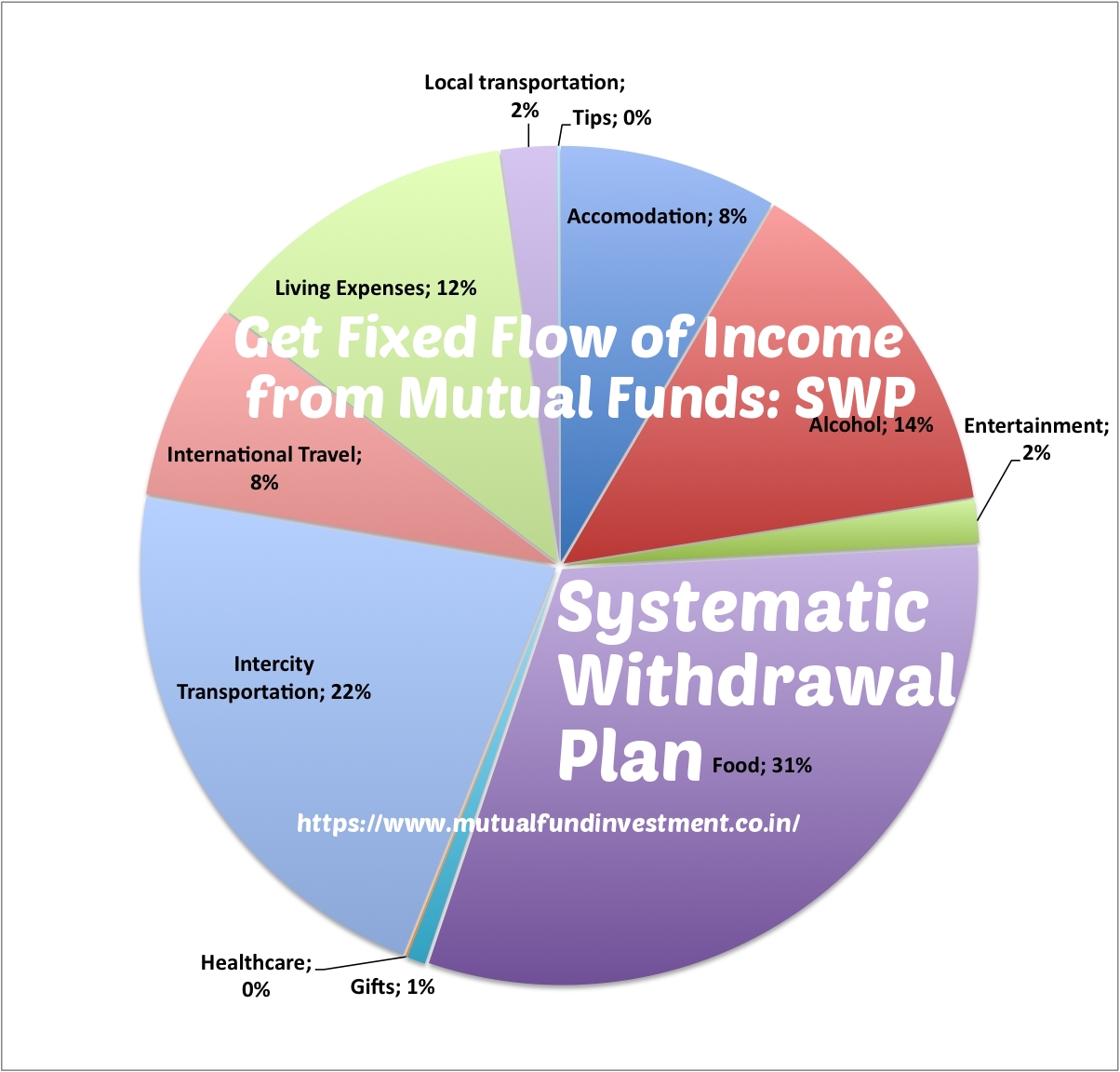For retired person or people with lump sum who are looking for fixed monthly income from their lump sum, there is good option in mutual funds. It is called Systematic Withdrawal Plan(SWP). SWP is a smart way to plan for your future needs by withdrawing fixed amount systematically from your existing portfolio. It gives monthly fixed income with investment option.
It gives monthly fixed income with investment option
It is suitable for retirees who are looking for a fixed flow of income. SWP can be scheduled to withdraw from one portfolio and invest in another mutual funds to diversify your investment. SWP helps investors who require liquidity as it allows them to access their money precisely when they need it.If planned well ahead of time, SWPs can provide a steady flow of money when most needed. They can therefore be linked to long term financial goals, such as providing a steady income in one’s retirement years or managing your child’s educational expenses.
SWP is open to all. You can even plan for a constant source of money for their retired parents.
However, the use of SWPs may not be restricted to retirees alone. It is also useful for middle-aged professionals who have the responsibility of their family. They can use SWP option to get a constant source of fund for their dependents. They can plan it for their child’s educational expenses. They can even plan for a constant source of money for their retired parents.
SWP Tax advantage
In case of investments in equity mutual funds for a period of more than a year , the long term capital gain is exempted. Only short term capital gains are taxable at the rate of 15% (if the total income does not exceed INR 1 Crore) on withdrawals from equity mutual funds investment within 1 year. Whereas in case of investments in debt schemes, the short term capital gain (invested period is less than 3 years) is added to the investors’ income and taxed as per their tax slab. Long term capital gains in debt schemes are taxed at the rate of 20% with indexation. In Systematic Withdrawal Plan (SWP), the tax is paid only on the gains made due to the NAV movement and not on the principal part in the withdrawals making the overall tax incidence lesser. Unlike SWP, in traditional investment options the entire gain is taxed according to the investors’ tax bracket (the highest currently being 30 %) considering if the investor falls under the highest tax bracket.
SWP is much more tax efficient and reliable.
How SWP works:
You have invested ₹10 lakhs in an equity mutual fund and you desire to withdraw 10000 rupees monthly using SWP. Hence, your withdrawal amount will be ₹1,20,,000 in a year. Take an example of ICICI blue chip growth direct plan invested on FEB 2015 with monthly 10,000 rupees withdraw from the mutual fund.
After withdraw monthly 10,000 rupees, you would have 7,62,000 rupees in your account and withdrawn 6,00,000 rupees in last 5 years from your account. It would give CAGR 8.20% return on mutual fund investment.

Which funds to select:
Mostly of the mutual funds support SWP option. Select Equity mutual funds in case your monthly expenses require after 5 years. Otherwise select debt mutual funds.
Axis Focused 25 Growth Direct Plan
Axis Long Term Equity Growth Direct Plan
Invesco India Opportunities Growth Direct Plan
SBI Banking & Financial Services Growth Direct Plan
Debt Funds:
Franklin India Ultra Short Bond Super Institutional Growth Direct Plan
Nippon India Liquid Growth Direct Plan
Axis Liquid Growth Direct Plan
Don’t confuse the SWP with a MIP. The Monthly Income Plan, or MIP, is a structured product. It is a debt-oriented hybrid fund with marginal exposure to equity. Each fund has its own mandate which sets the equity limit anywhere from 10% to 25%, maybe even 30% in a few select cases. Dividends are given to the investor depending on the fund’s ability to generate returns. No guarantees or assurances here. The SWP is NOT a product. It is merely a facility that allows for disciplined withdrawals from a mutual fund – it could be any fund; equity, debt or hybrid.
Systematic Investment Plan (SIP) vs SWP :
An SIP is an option of investing a fixed sum in a mutual fund scheme on a regular basis i.e. predefined regular intervals. It is similar to regular saving schemes like a recurring deposit.
It is a disciplined investment plan and cost averaging helps reduce impact of market volatility.
With SIP, one can build up significant wealth in long run with small sums of money.
Do not opt for a SWP when you have a regular cash flow. Instead, opt for a systematic investment plan, or SIP. This is the time you should be putting your money to work to attain your goal of wealth creation.
Systematic Transfer Plan (STP) vs SWP:
STP is a plan that allows the investor to give a mandate to the fund to periodically and systematically transfer a certain amount/ number of units from one scheme and invest in another scheme.
This helps ensure that your money is unaffected by any market volatility in short term.
Don’t confuse the SWP with a STP. The Systematic Transfer Plan, or STP, allows you to transfer money from one fund to another in a periodic and disciplined fashion. For example, if you wish to invest in the stock market via an equity fund, but want to do is systematically and not at one go, then the STP comes in handy. You can park the bulk amount in a debt fund and decide on the fixed amount that be systematically transferred to the equity fund every month. The money will earn you more in a debt fund than a savings account. However, this works best if the amount parked is a substantial amount.
Now that you are aware of what SWP is, what are its benefits, and how it works, it’s time to start getting returns from your invested funds on a regular basis through SWP.
To Become Rich : Invest in 6 Mutual funds and increase 10% by each year.
Do you know 15 * 15 * 15 = 1,00,00,000 (One Crore)







